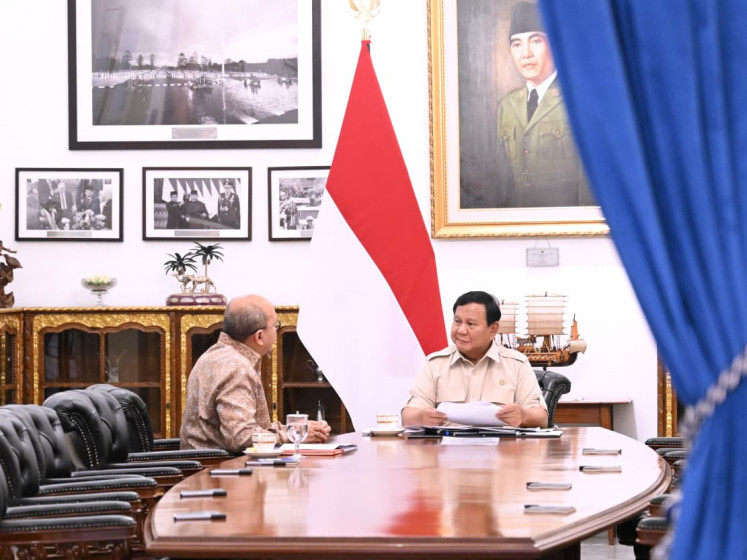Popular Reads
Top Results
Can't find what you're looking for?
View all search resultsPopular Reads
Top Results
Can't find what you're looking for?
View all search resultsMobile computer for power users
As you must know very well, a personal computer needs an operating system (OS) to enable the hardware to listen to the software
Change text size
Gift Premium Articles
to Anyone
A
s you must know very well, a personal computer needs an operating system (OS) to enable the hardware to listen to the software. We have a variety of OS, including the Open Source-based Linux, the market-dominating Microsoft Windows, and the Mac OS X from Apple. Each has its strengths and weaknesses, of course.
Nokia N900: maemo.nokia.com
Likewise, a smartphone needs an OS to let applications such as the phone software, the camera functionality and the GPS to work together with hardware components such as the radio frequency, the camera and the GPS receiver modules.
In the past, each time we talked about the OS of a Nokia smartphone, chances were we would be talking about Symbian. In fact, Symbian was developed by The Symbian Foundation, and is allowed to offer the Symbian platform as an Open Source. Today, Symbian has remained the most widely used smartphone OS in the world.
But, recently, Nokia brought us Maemo, another OS based on Linux that Nokia deployed in its Internet tablets N770, N800 and N880. Now the Nokia N900 smart phone comes with Maemo as well. It was officially launched in Indonesia not very long after the Android-based Motorola Milestone. As often is the case, this model had been available on the market before it was officially launched.
Maemo, the new kid in the block, is developed by Nokia — with the N900 being the first smartphone to run it. The N900 has a lot of potential, including the possibility for programmers to create their applets on the smartphone itself. These applications can then be ported to a different OS using the Qt cross- platform applications and user-interface framework released by Nokia.
But, first, let me take you through the hardware. The N900 is a bit thick, because of its sliding keypad. There is no rocker button on the keypad and no pointer to control either. There are four arrow keys for scrolling around the web page. It is also a touch-screen handset, and a stylus is tucked into the keypad just in case you have oversized fingertips to press the application shortcuts and widgets.
This smartphone is driven by an ARM Cortex A8. It has 1 GB memory just for applications and a whopping 32 GB to store up to 7,000 songs or 40 hours of DVD-quality video. If that is not enough, you can still add another 16 GB with a microSD.
As expected, the 5 MP-camera has a Carl Zeiss Tessar lens. I like it, because it has a lens cover. A button on the right side, if we are holding it vertically, lets us turn on or off the device.
The smartphone supports full multitasking. So, for example, while downloading video, Google can be opened to do a search. Nokia uses the Mozilla browser. By the way, I test drove this model using my home WLAN only, and it worked very well. Being a high-end smartphone, it supports HSDPA with up to 10 Mbps downlink and up to 2 Mbps uplink.
What do I think of the N900? I found the user-interface a little bit unfamiliar. Fortunately, the customizable dashboard is a big help. You can add your contacts to one of the dashboards for quick access. You can move from one dashboard to the next by sliding your finger sideways.
This Rp 6 million mobile computer – as Nokia prefers to call it – must be pretty popular among power users and those who access the web frequently. Watching videos on YouTube on the 3.5-inch, 800x480 screen is a great experience. The device has dual speakers. The keypad is useful, too, especially for people like me who tend to shun using a touch-screen.
However, the OS does not support multi-gesture, so we cannot zoom in or out with two fingers on the screen. In addition, the N900 must be intimidating for those who only use their phones for simple communication such as making voice calls and sending or receiving text messages.
Incidentally, Nokia Indonesia recently launched Nokia C3, a sleek model targeted to those who prioritize simplicity in accessing social networking sites. Indonesia was the first country in the world to have the official launch of the C3, mainly because the country experienced the fastest growth in social networks.
It uses Nokia’s owned Series 40 OS, and is designed in such a way to make the setting up very easy. It has a BlackBerry-like keypad, which makes entering text a snap. I suspect the color, design, ability to access Facebook and others right from the Home screen and the Rp 1.1 million will make the C3 a very popular handset among social networkers.










